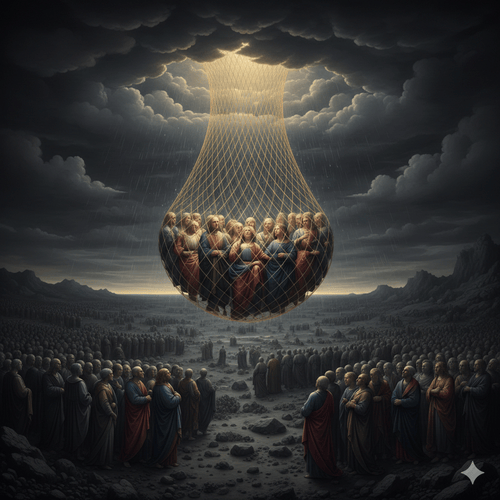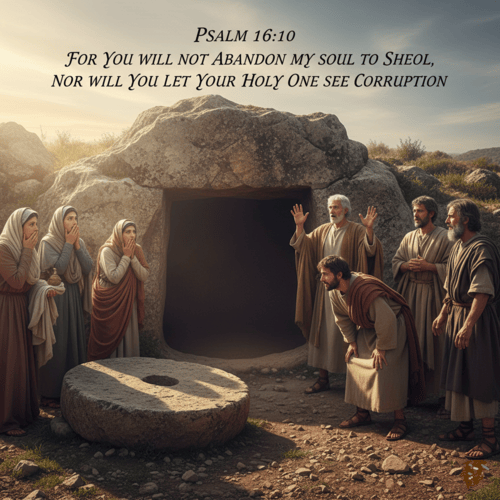Creation’s Clock: Defending the 24-Hour Day in Genesis 1
In the beginning, God created the heavens and the earth. These opening words of Scripture set the stage for one of the most foundational narratives in the Bible—the creation account. Yet today, many Christians find themselves wondering whether the days described in Genesis 1 were actually 24-hour periods or symbolic representations of longer ages. The question isn’t merely academic; it strikes at the heart of how we understand Scripture and the very foundations of our faith.
THE PLAIN READING OF SCRIPTURE
The text in Genesis 1 presents a clear pattern: “And there was evening, and there was morning—the first day.” The formula repeats for each of the six days of creation. The Hebrew word for “day” here is yom, which, when accompanied by a numerical qualifier (first, second, third) and the phrase “evening and morning,” consistently refers to a literal 24-hour day throughout the Old Testament.
Consider this: if God wished to communicate He created the world in six literal days, how could He have stated it more clearly? The text goes to great lengths to define each day with its boundaries of evening and morning. This isn’t poetic language; it’s precise, deliberate, and straightforward.
Furthermore, Exodus 20:11 removes any ambiguity when it states: “For in six days the LORD made the heavens and the earth, the sea, and all that is in them, but he rested on the seventh day.” Here, God Himself connects the creation week directly to our work week as the basis for the Sabbath command. If the creation days were actually long ages, the comparison would be meaningless.
THE 24-HOUR DAY IN GENESIS: PROBLEMS WITH ALTERNATIVE VIEWS
Many well-meaning Christians have adopted alternative interpretations of Genesis 1, such as the Day-Age Theory or the Framework Hypothesis. However, these views create more problems than they solve.
The Day-Age Theory, which suggests each “day” represents millions or billions of years, runs into serious issues with the order of creation. Genesis places the creation of plants (Day 3) before the sun (Day 4), which would be impossible if these “days” were long ages—plants cannot survive for millions of years without sunlight.
The Framework Hypothesis, viewing the days as a literary device rather than chronological history, undermines the clear narrative intent of Genesis. If Genesis 1 is merely figurative, on what basis do we determine which other historical narratives in Scripture are literal and which are not?
THE THEOLOGICAL DOMINO EFFECT
When we reinterpret the days of Genesis to accommodate long ages, we set off a chain reaction of theological problems:
- Death Before Sin: If the fossil record represents millions of years of death and suffering before Adam’s sin, this contradicts Romans 5:12, which states “sin entered the world through one man, and death through sin.” It also undermines God’s declaration that His creation was “very good” (Genesis 1:31), as the fossil record displays disease, violence, and extinction.
- The Authority of Scripture: If we need modern science to correctly interpret Genesis, what does this say about the clarity of Scripture? Did believers throughout history, lacking our scientific knowledge, completely misunderstand this fundamental text? This approach elevates changing human theories above God’s timeless revelation.
- The Gospel Foundation: The parallel between Adam and Christ in Romans 5:12-21 treats Adam as a real historical figure whose actions had real consequences. If we metaphorise Adam or the events of Genesis, we weaken this crucial gospel connection. Paul’s entire argument about sin and salvation depends on Adam being as historically real as Jesus.
- Interpretive Precedent: Reinterpreting Genesis to accommodate current scientific theories creates a dangerous precedent for biblical interpretation. If we allow external factors to override the plain meaning of Scripture in Genesis, what prevents us from doing the same with the virgin birth, the resurrection, or any other supernatural element of Scripture that conflicts with naturalistic assumptions? This “hermeneutic of accommodation” threatens the integrity of all biblical interpretation.
- Theological Connection to the Sabbath: In Exodus 20:8-11, God explicitly connects the six-day creation pattern to our seven-day week and the Sabbath command. “For in six days the LORD made the heavens and the earth… but he rested on the seventh day.” This commandment loses its logical foundation if the days of creation were actually long ages. God established the Sabbath as a creation ordinance based on His own pattern of work and rest—a pattern that makes no sense if “days” meant millions of years. This connection between creation and Sabbath appears throughout Scripture (Exodus 31:17, Hebrews 4:3-4) and forms an important part of our understanding of both work and worship.
Each of these theological issues builds upon the others, creating a domino effect that ultimately undermines key doctrines of the Christian faith. What begins as a seemingly small interpretive compromise in Genesis 1 cascades into significant theological problems that affect our understanding of sin, salvation, Scripture’s authority, and even God’s character as a clear communicator.
THE 24-HOUR DAY IN GENESIS: SCIENTIFIC CONSIDERATIONS
While this discussion centres on biblical interpretation, it’s worth noting that scientific evidence isn’t uniformly against a young earth. Consider these facts:
- Mount St. Helens demonstrated how catastrophic processes can form geological features in days that were previously thought to require millions of years.
- Radiometric dating methods rest on assumptions about initial conditions and constant decay rates that cannot be proven.
- The discovery of soft tissue in dinosaur fossils challenges the idea these fossils are millions of years old.
- The rapid burial needed for fossilisation aligns better with catastrophic events than with slow, gradual processes.
CONCLUSION: WHY THE 24-HOUR DAY IN GENESIS MATTERS
Some might ask, “Does it really matter how long God took to create?” Yes, it does—tremendously. This isn’t about being rigid or traditional for its own sake; it’s about maintaining the integrity of Scripture and the theological framework that supports the gospel.
When we accept Genesis as written—six literal days of creation—we affirm:
- God’s power to create exactly as He said He did
- The reliability of Scripture from its very first chapter
- The reality of sin’s entrance into a perfect creation
- The historical foundation for Christ’s redemptive work
As Christians facing the challenges of our scientific age, we need not compromise on Scripture’s clear teaching. In a world that increasingly questions the authority of Scripture, standing firm on the literal days of creation isn’t about clinging to outdated ideas—it’s about trusting the God who was there “in the beginning” and who has revealed Himself through His Word.
THE 24-HOUR DAY IN GENESIS: RELATED FAQs
How do we explain distant starlight if the universe is only thousands of years old? Light from distant stars could have reached Earth through several mechanisms compatible with a young universe. God may have created light already in transit during creation week, allowing us to see distant celestial objects immediately. Alternatively, gravitational time dilation (as suggested by some creationist cosmologists) could explain how billions of years of processes in deep space occurred while only thousands passed on Earth.
- What does the gravitational time dilation theory suggest about starlight and a young Earth? Gravitational time dilation, a verified aspect of Einstein’s relativity, suggests time flows at different rates depending on gravitational fields. Some creation cosmologists propose that during creation, Earth was in a deep gravitational well where time passed much more slowly than in the outer universe. This would mean that while only days passed on Earth during creation week, billions of years of light travel occurred in the expanding universe—allowing light from distant stars to reach Earth within a biblical timeframe without undermining the young Earth position.
- What about the apparent age of the Earth? Wasn’t it created with the appearance of age? God created a fully functioning, mature creation—Adam and Eve as adults, trees bearing fruit—but maturity is different from deceptive age. The Earth shows signs of a young age when interpreted without uniformitarian assumptions: rapidly decaying magnetic fields, helium retention in zircons, and limited seafloor sediment all point to thousands, not billions of years of Earth history.
How do we explain the fossil record if not through long ages? The global Flood described in Genesis 6-9 provides a superior explanation for most of the fossil record. This catastrophic event would have rapidly buried billions of organisms in sedimentary layers, explaining the preservation of soft tissues, polystrate fossils (crossing multiple layers), and the absence of transitional forms better than slow, gradual processes over millions of years.
- Doesn’t 2 Peter 3:8 (“a day is like a thousand years”) support non-literal days in Genesis? 2 Peter 3:8 talks about God’s timelessness and patience: it’s not presenting a formula for interpreting “day” in Genesis. The context of 2 Peter 3 addresses scoffers who doubt God’s judgement, not the timeframe of creation. Using this verse to reinterpret Genesis 1 ignores the clear context of both passages and overlooks the specific Hebrew grammatical construction used in Genesis 1 that indicates literal days.
- How do we explain the various dating methods that suggest an old Earth? Radiometric dating methods rely on unprovable assumptions about initial conditions, contamination, and constant decay rates. These methods have frequently yielded wildly inconsistent results—rocks of known age (from recent volcanic eruptions) have been “dated” as millions of years old, and different methods often give contradictory ages for the same rock samples. When calibrated within a biblical framework, the scientific data is fully compatible with a young Earth.
- Why do most scientists accept an old Earth if the evidence supports a young Earth? Scientists interpret evidence through their existing worldview and philosophical commitments. Modern science operates under methodological naturalism, which excludes supernatural explanations regardless of evidence. Many scientists who have examined the evidence without this philosophical constraint have concluded that the data better supports a young Earth, showing this is an issue of interpretation, not factual disagreement.
Doesn’t accepting a young Earth mean rejecting science? Young Earth creationism doesn’t reject science—it rejects naturalistic interpretations of scientific data. Many accomplished scientists throughout history and today have been young Earth creationists who conduct rigorous research while interpreting evidence within a biblical framework. True science involves following evidence where it leads rather than conforming it to prevailing paradigms, and creation science offers testable models that explain observed phenomena without contradicting Scripture.
THE 24-HOUR DAY IN GENESIS: OUR RELATED POSTS
Editor's Pick

Why Do People Hate the Doctrine of Election?
…WHEN THEY REALLY SHOULDN’T Few Bible doctrines provoke stronger reactions than election. The idea that God chose some for salvation [...]

The Doctrine of Providence: Does God Really Govern All Things?
You’re sitting in the doctor’s office when the diagnosis lands like a thunderclap. Your mind races: Why this? Why now? [...]

No Decay, No Defeat: What It Means That Christ’s Body Saw No Corruption
On the Day of Pentecost, Peter stood before thousands and made a startling claim: David's body decayed in the tomb, [...]
SUPPORT US:
Feel the Holy Spirit's gentle nudge to partner with us?
Donate Online:
Account Name: TRUTHS TO DIE FOR FOUNDATION
Account Number: 10243565459
Bank IFSC: IDFB0043391
Bank Name: IDFC FIRST BANK






